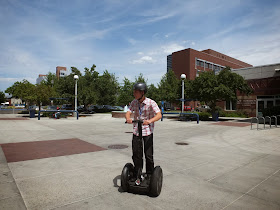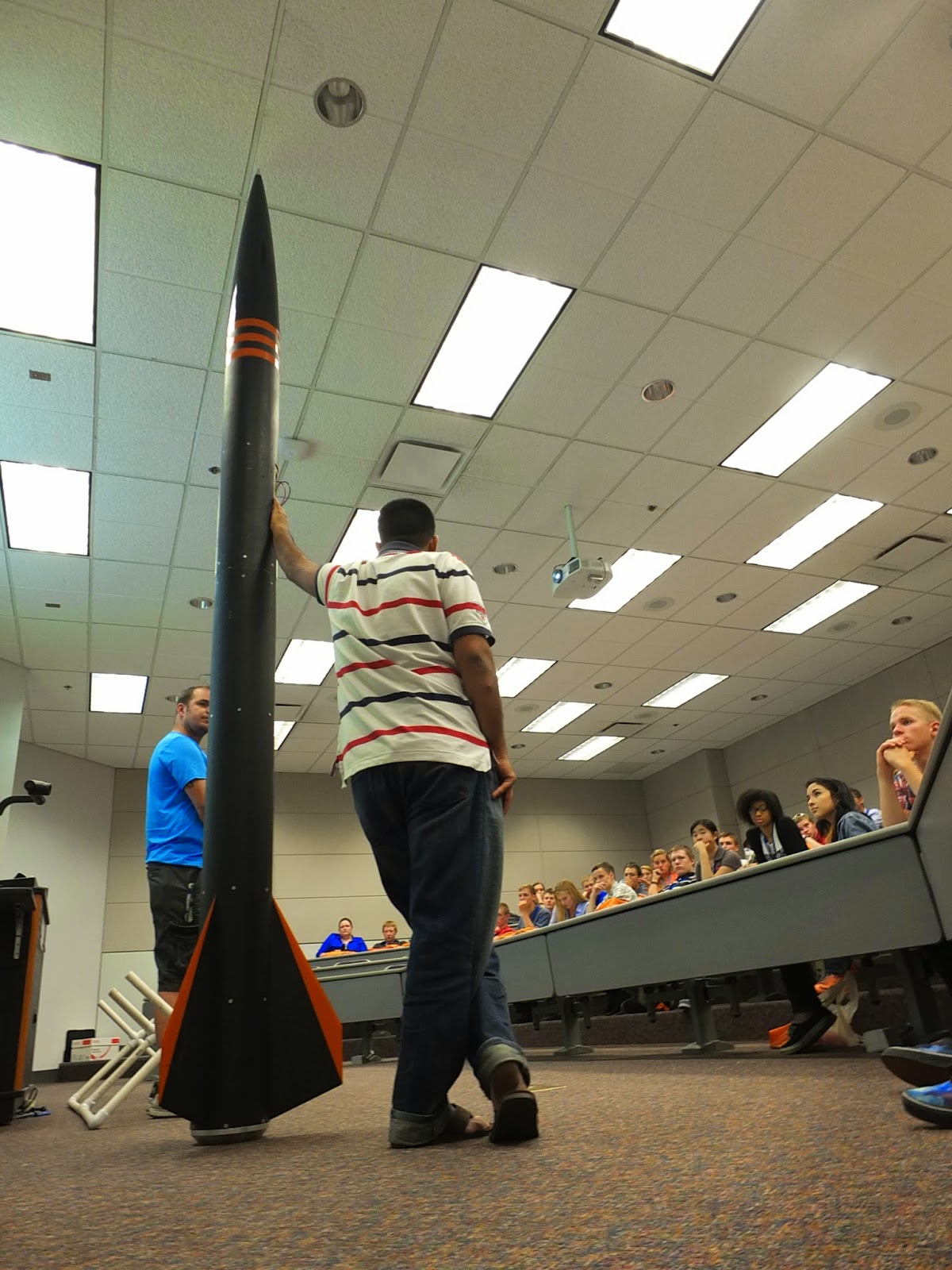This morning the students again rose early and readied themselves to start their second day at the NASA Ames Research Center. After so many exciting activities yesterday they knew to expect an engaging and informing time during the presentations and tours that would be given. The day did not disappoint.
 |
| The sign welcoming ISAS onto NASA Ames. |
The morning started off with a presentation from Mark Leon, from the panel last night, as well as from the tour of the robotics yesterday. He talked about his experience building lunar rovers, giving the scholars advice about what they may do with rovers on Mars. Students, during his presentation, also got to control a lunar Mars rover model, driving it around on the floor.
 |
| Receiving help from NASA interns, scholars controlled a lunar robot model. |
Students then went to visit two human centrifuges. Among other things, these machines study how humans react in conditions of up to 5 g’s, though the centrifuge can go up to 20 g’s. Daniel Morgan explained that one end of the large centrifuge is used for human experiments and the other for non-human ones. Students got the opportunity to sit in the centrifuge chair, take pictures and explore the spinning contraption. The smaller centrifuge used to be human powered, but has since been modified to use an engine. The pedals are still used for experiments studying exercise.
 |
| Students sit in the 20 G centrifuge. |
The students also visited the Space Shop, where ideas come to life as laser cutters and 3D printers, along with various other machines that cut or shape parts of machines for engineers to compile together. The Space Shop works as an open 3D printing lab where engineers, scientists and other professionals can prototype ideas for products. Alex Mazhari, from last night’s panel of experts, explained how each machine worked and what its purpose was.
Soon after, students were fortunate to with another NASA scientist, Dana Backman who works on SOFIA, a NASA, DRL (the German space agency) joint project. Sophia is a renovated Boing 747 that has been modified to contain a 2.5 meter diameter inferred telescope, the world’s largest movable telescope. Teachers and scientists across the nation and from Germany have the opportunity to perform experiments on a 10 hour flight. Water vapor in our atmosphere blocks inferred light from hitting us on Earth, however getting the telescope up in the stratosphere lets 80% more inferred get through. To them it is just as good as a telescope in space, without all the hassles of space travel, and with more returns to Earth.
 |
| Dana Backman speaks to the students. |
Students later paid a visit to the Fluid Dynamics Lab, a lab where many testing has been done for both sport companies and the media, including the 2014 soccer world cup ball, and TV’s Mythbusters. They were able to see the "Life Saver" wind tunnel. Here students participated in an experiment that involved the turbulence created by the flowing air rushing against the walls of the wind tunnel. Around the walls the air slows down to a point where the velocity is zero but as you move away from the wall toward the air stream the velocity gradually increases. This allowed the students to listen to a change of pitch in the airflow as they moved a tube near and away from the wall. Also in the Fluid Dynamics Lab, students could see the air flow as neon dye was pushed through a water tank around a replica of the space shuttle.
 |
| Students visit the facilities' smaller wind tunnels. |
Students visited the Crew-Vehicle Systems Research Facility for a tour led again by Lisa Grant. This lab is home to a full 747 simulator that sits on six pivoting legs. It gives piolts a chance to practice flying in a motion sensitive environment. They were also able to see an original simulator of a world war two plane made from organ-like air pumps.
 |
| Students ask questions about the simulators. |
The scholars reluctantly left Ames, however they were excitingly talking about all that they had seen in just two days, and eagerly planning their futures where they might work alongside these and other scientists, engineers and professionals.
We’d like to thank our tour guide, Tom Clausen and Adrianne Wilkinson, and all other professionals at NASA Ames Research Center who took time out of their busy schedules to help and interact with our students. The professionals were all eager and excited about their subject matter, which helped get the students eager and excited. NASA Ames is a memory none of the students will ever forget.
Don't forget to check out the Facebook and Twitter pages for more frequent updates as well as all of the day’s pictures. We hope to see you at the Saturday banquet for the final presentation of the students’ mission plans. #ISASacademy
Camille Eddy (ISAS 2012 alumna) and
Holly Palmer (ISAS 2013 alumna)
ISAS Social Media Mentors
Holly Palmer (ISAS 2013 alumna)
ISAS Social Media Mentors








































